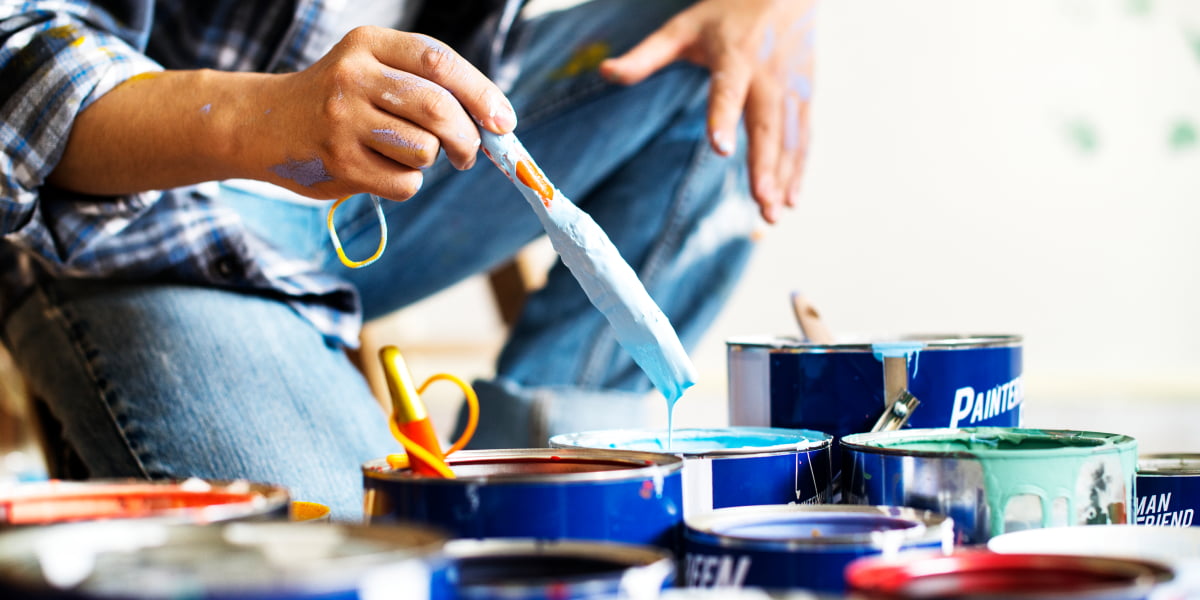Published on December 1st, 2022
Last updated on February 3rd, 2023
What Is The Best Kitchen Flooring? Kitchen Flooring Guide From A To Z
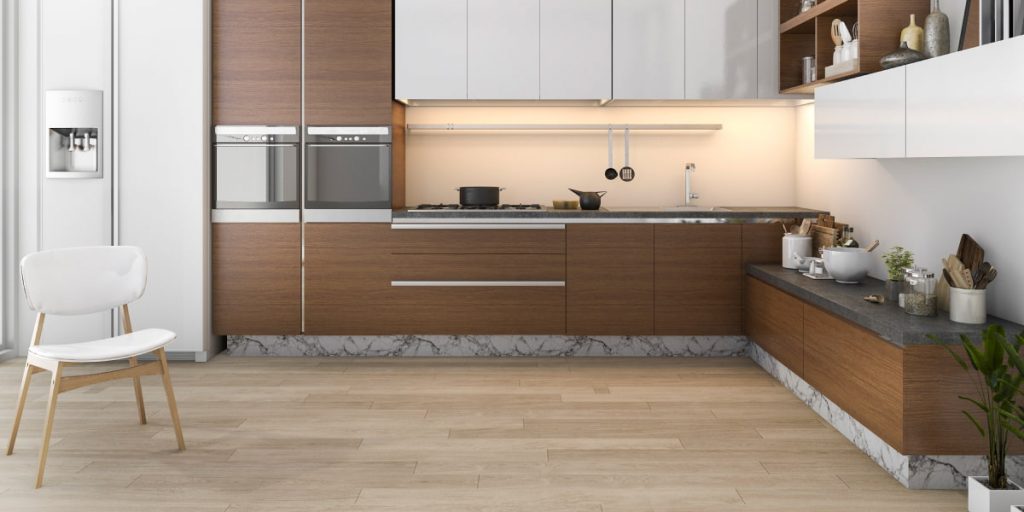
A kitchen is a place that requires attentive care. Something often gets spilled there, gets dirty, and wears out quickly. Therefore, the floor covering should harmoniously fit into the interior and be reliable, and durable. So, there are such types of kitchen floors:
- Ceramic tile;
- Laminate;
- Natural stone;
- Linoleum;
- Concrete.
The kitchen is the most technological room in the house. So, you need high quality floor material. After all, among all the other rooms, the floor in the kitchen is most prone to damage. So, you should choose suitable flooring materials for the kitchen. Building stores offer the most diverse types of floors. They can vary in the budget, colors, and shapes. For example, if you like something luxurious and durable, then choose a natural stone. If you have a limited budget and want to save on the work of craftsmen, linoleum is a good option for flooring in kitchens. You can even do it yourself. So, weighing your requirements and preferences, you can choose a suitable material.
7 Best Types Of Kitchen Floors
To choose the best kitchen floor, you should pay attention to some things. They include condensation resistance, wear resistance, and ease of maintenance. These are the main key factors in choosing a floor because they determine its quality.
But if you don’t know what floor to choose, a successful solution can be a combination of floorings. For example, choose a strong and protected layer in the work area and an affordable and comfortable one in the dining room. And how to choose kitchen flooring more decisively, keep a list of reliable options:
1. Ceramic Tile
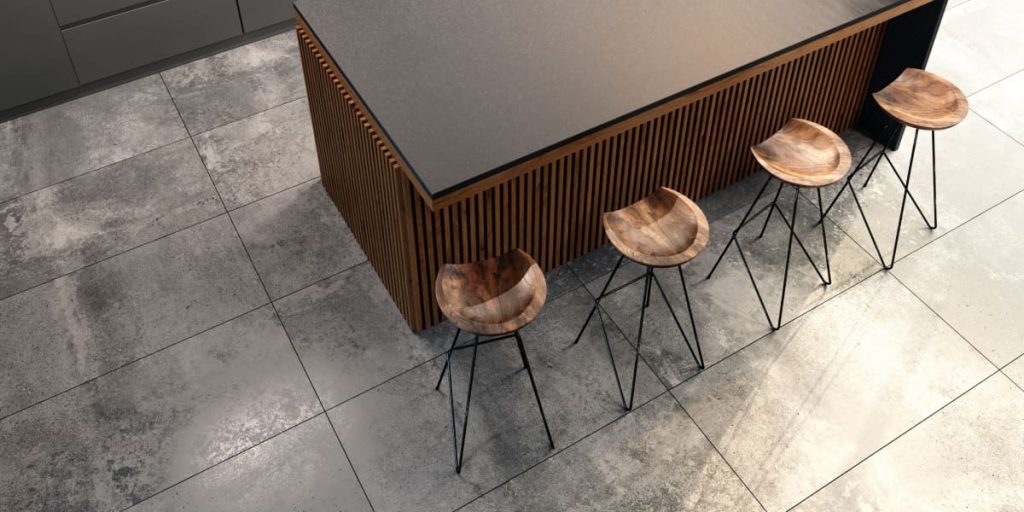
Ceramics is a natural and safe material that is entirely ecologically harmless. It is not afraid of the influence of aggressive substances, humidity, and other negative consequences. It’s why it is one of the most popular kitchen floorings. You can use it not only for the floor but also for the wall cladding in rooms with a high level of humidity.
Ceramic tiles are very practical and convenient. They are inexpensive and have a beautiful and diverse appearance. Modern manufacturers offer ceramics of various types of kitchen floors. It includes different textures, patterns, and textures, which provides ample opportunities for designing in any style.
You can lay such tiles diagonally, in a straight line, or combine these methods. But to better understand whether this option is right for you, analyze the advantages and disadvantages of ceramic tiles:
Advantages
- long-lasting coverage;
- fire resistance;
- humidity resistant;
- environmental friendliness;
- strength.
Disadvantages
- high cost;
- very cold. However, if you install a warm floor under this tile, you can eliminate this drawback.
2. Wood
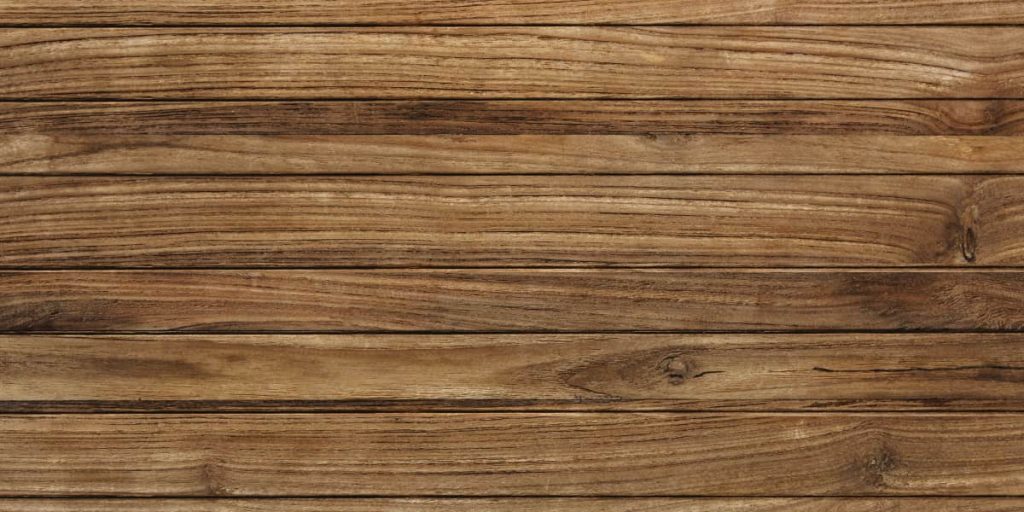
It is one of the most popular kitchen floorings and has many wooden floor types. Natural wood is not cheap. But thanks to them, the kitchen’s interior looks elegant and respectable. However, any kitchen will constantly expose to high humidity. So you must be careful when choosing a wood material. Select a hard, dense wood such as oak or beech.
To ensure the durability of such material, experts recommend covering the wooden floor with a special coating, such as oil or varnish. It will protect it from scratches and stains. However, even if such situations arise when you damage the wooden floor, you can polish such a type of kitchen floor. Thus, you can restore its appearance and enjoy the beautiful interior of the kitchen.
Advantages
- durability;
- environmental friendliness;
- low thermal conductivity;
- humidity resistance;
- easy to clean.
Disadvantages
- regular care of the wood is necessary to maintain operational and aesthetic qualities;
- the high price;
- stains and ingress of water have a bad effect on it.
3. Vinyl
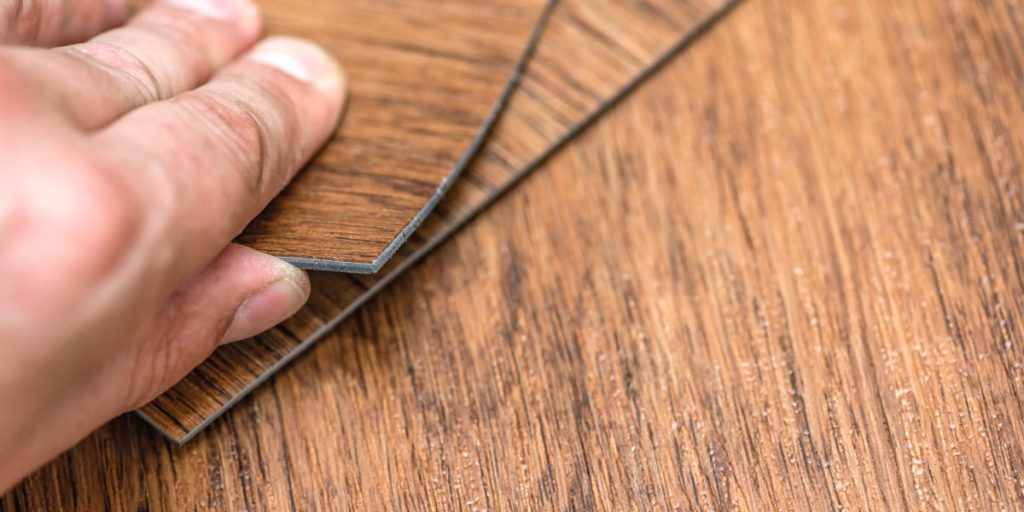
Vinyl flooring is a modern multi-layer floor covering based on vinyl. The structure of the vinyl coating contains at least five main layers. Thus, the durability and strength of the coating become possible thanks to the reliability of such a design.
The vinyl range is wide in shades and decor. So, this is one of the most popular kitchen flooring. You can choose any shade and texture to harmonize with your interior. Moreover, such a floor is waterproof and resistant enough. It’s what makes vinyl one of the best kitchen flooring.
Advantages
- High strength;
- In contact with conductive elements, the floor will not create electric shocks;
- Resistant to temperature changes;
- High thermal insulation;
- Сleaning with any detergents;
- Durability.
Disadvantages
- Impossibility of restoration;
- Despite its resistance to the formation of stains, it can change its color. For example, turn yellow or darken.
4. Laminate
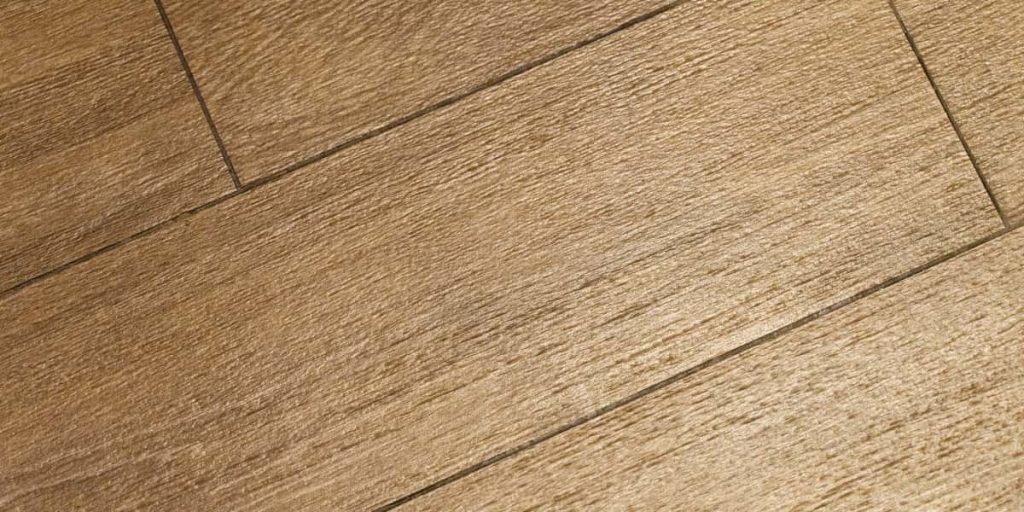
The laminate used for the kitchen has some features. First, it is humidity-resistant, indicating one of the best kitchen flooring materials. Specialists make it from several different layers. Each of them handles color, heat, and water resistance functions.
Laminate has become widely used relatively recently. It allows you to imitate natural wooden floors without sacrificing strength and durability. Because this material has different designs, you can lay it with various methods.
Advantages
- High level of hygiene;
- Acceptable cost of the material;
- Variety of decor. Everyone can choose any color and texture for the kitchen;
- Resistant to pressure, loads, and abrasion;
- Does not leave dents and traces of heavy objects;
Disadvantages
- High requirements for laying such a floor;
- It can creak if the laying technology is damaged.
5. Linoleum
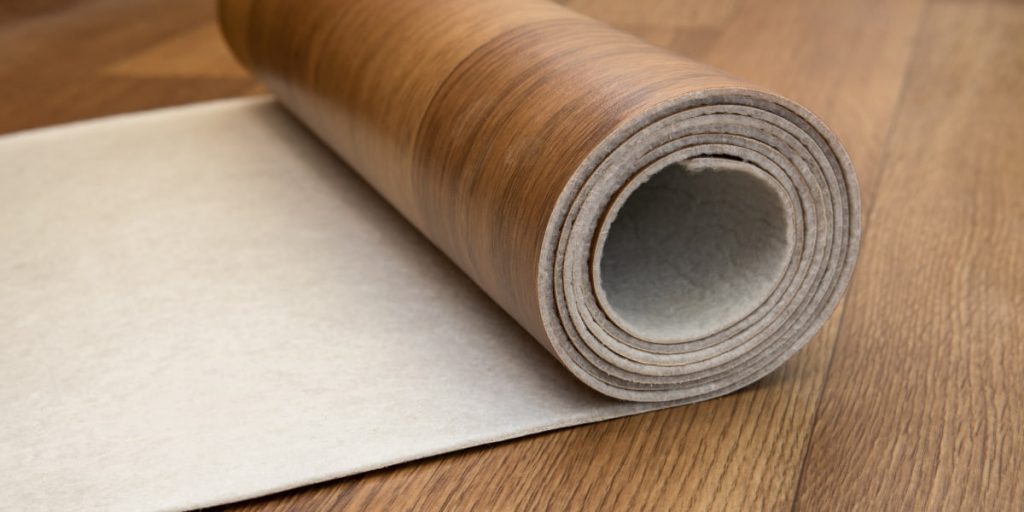
Most people think that linoleum is a bad option for the kitchen. They explain it by the fact that water getting on this material leads to its rapid damage. But, this is a misconception. Modern building materials offer many opportunities for linoleum. So, it can be the best kitchen flooring option that you can use even in the bath. It indicates good humidity resistance and practicality.
There are three types of linoleum: household, commercial, and semi-commercial. Semi-commercial is the most popular kitchen flooring. It is more resistant and will serve you much longer than a household one.
If we talk about the price, then such material for the floor is inexpensive and has a long service life – on average, 8-10 years. It is easy to install and does not need special care. Also, linoleum has excellent heat and sound insulation.
Advantages
- Waterproof;
- Easy to wash;
- Inexpensive;
- It is easy to work with;
- Does not rot and does not make noise when walking on it;
- Lasting.
Disadvantages
- Damaged by sharp or heavy objects.
- If the foundation for laying is poorly aligned, the bridges may make a creak when walking on them over time.
6. Cork floor
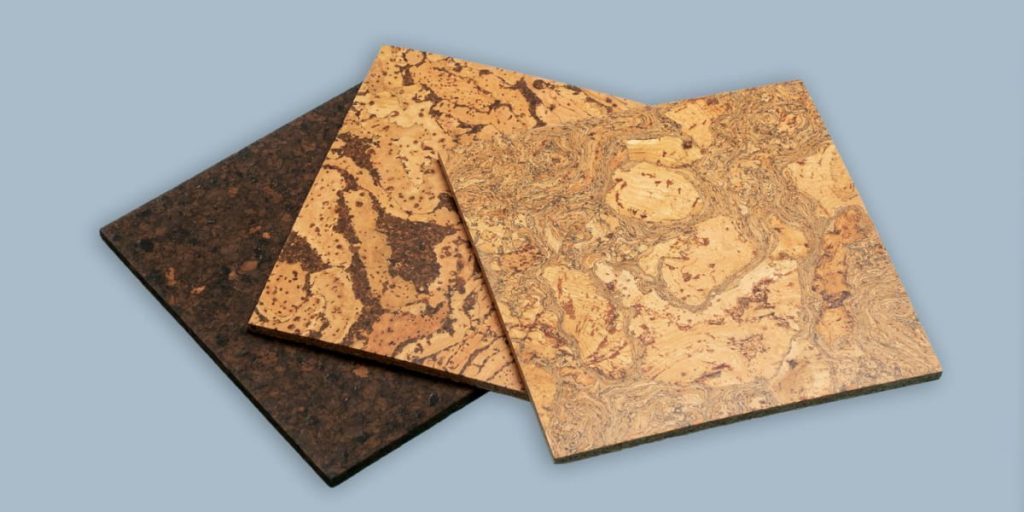
This type is made from natural material – a crumb of crushed cork oak bark and binder components. People use cork flooring in rooms where comfort, environmental friendliness, silence, and a warm floor are required. So, it is one of the best kitchen floors. The cork floor has a unique waterproof and plastic structure. It is crucial in the kitchen because there is a high probability of water getting on the floor.
One of the main disadvantages of cork coatings is the presence of a protective layer that wears off over time. It means that such a floor covering requires special care. So, you need to cover the cork floor with a new varnish every three to four years.
However, this does not prevent people from choosing this material, and it continues to be one of the best kitchen flooring options. It is because laying the cork floor with varnish gives an excellent result.
Advantages
- You can place heavy furniture on such a floor because no traces will remain;
- No slippery;
- Resistant to aggressive chemicals;
- Easy to care for;
- Pretty challenging to break dishes against such a coating;
- Fire resistant.
Disadvantages
- Expensive;
- Not resistant to sharp objects;
- Under the sun’s direct influence, the cork can fade in some places.
7. Natural stone
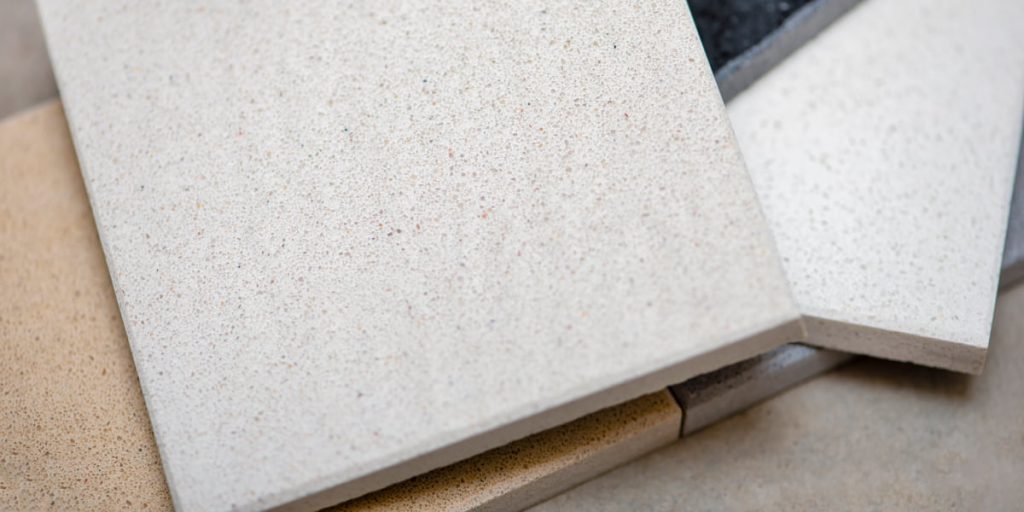
Natural stone is a noble, reliable, and durable material for the floor. Its cost may not be affordable for everyone. However, now there are many high-quality imitations from other materials that will successfully decorate the interior of your kitchen. Any design solution that uses natural stone looks aesthetic, presentable, and refined.
Natural stone can be of many types, for example, marble, travertine, granite, and slate. The best kitchen flooring materials are granite and marble. Granite floors are not prone to abrasion. They are environmentally friendly, do not allow water to pass through, and are not afraid of frost. A marble floor is always an example of luxury and perfection. It is thanks to the material’s fantastic colors and unique patterns.
Other stones are also good flooring for kitchens, but their choice depends on your preferences and compatibility with other kitchen details.
Advantages
- Such a floor is environmentally friendly;
- Strong and durable and does not require special care;
- Unlimited service life;
- No harmful elements released at elevated temperatures;
- Suitable for any interior.
Disadvantages
- Very expensive;
- Tendency to scratch.
Summary
Each material has its pros and cons. However, it does not matter whether you choose the best kitchen floor from natural stones or the usual linoleum. First, you should pay attention to humidity resistance, strength, and reliability. If all this is combined in the material you choose, all the shortcomings will disappear. The main thing is to care for the floor and avoid damaging it correctly.
FAQ
What is the most effortless kitchen floor to maintain?
For most owners, choosing a floor that is easy to care for is essential. It includes linoleum, natural marble stone, and ceramic tiles. Their surface is not affected by chemical agents, so it is easy to maintain.
How to choose kitchen flooring?
To choose a kitchen floor for yourself, you should pay attention to style, color, durability of the material, and maintenance. How long your kitchen floor will last will depend on these things. So think about it carefully and remember your budget to know which floor materials to focus on.
Should the kitchen floor be lighter or darker?
It depends on your choice because there are no specific rules about it. However, designers recommend choosing a light floor for contrast if your kitchen has dark furniture. And choose black color for a more presentable and strict look.
What is the longest-lasting kitchen flooring material?
Ceramics is a material that has the greatest durability. Ceramic tiles will never deteriorate due to water ingress and do not cause mold. Therefore, it is often chosen specifically for the kitchen.
What is the hardest vinyl flooring?
Luxury vinyl tile is gaining more and more popularity. It is also known by the abbreviation ”LVT.” This tile is popularized for its durability, wide selection of designs, and resistance to any damage.


